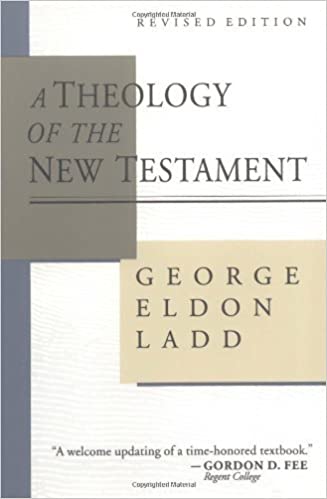A Brief Book Summary from Books At a Glance
About the Author
George Ladd (1911-1982) was Professor of New Testament Exegesis and Theology at Fuller Theological Seminary, Pasadena, California. He wrote many books that were highly influential.
Introduction
Ladd’s A Theology of the New Testament is a classic reference work for NT studies. He works through the major NT corpora, expounding their theological contributions and emphases. Ladd is conservative and evangelical, but sensitive to the contributions responsible criticism can play. This book has served as a major and valuable contribution to the field for years.
Table of Contents
- Introduction
I: The Synoptic Gospels
- John the Baptist
- The Need of the Kingdom
- The Kingdom of God
- The New Age of Salvation
- The God of the Kingdom
7. The Mystery of the Kingdom - The Kingdom and the Church
- The Ethics of the Kingdom
- The Messiah
- The Son of Man
- The Son of God
- The Messianic Problem
- The Messianic Mission
- Eschatology
- Matthew, Mark, and Luke (R. T. France)
II: The Fourth Gospel
- The Critical Problem
- The Johannine Dualism
- Christology
- Eternal Life
- The Christian Life
- The Holy Spirit
- Eschatology
III: The Primitive Church
- The Critical Problem
- The Resurrection of Jesus
- The Eschatological Kerygma
- The Church
IV: Paul
- Introduction
- Sources of Paul’s Thought
- Humanity outside of Christ
- The Person of Christ
- The Work of Christ: Atonement
- The Work of Christ: Justification
- The Pauline Psychology
- The New Life in Christ
- The Law
- The Christian Life
- The Church
- Eschatology
V: Hebrews and the General Epistles
- Hebrews
- James
- 1 Peter
- 2 Peter and Jude
- Johannine Epistles
VI: The Apocalypse
- The Apocalypse
- Appendix: Unity and Diversity in the New Testament (David Wenham)
Summary of Part I and Part II (chapters 1-23)
Part I: The Synoptic Gospels
John the Baptist’s ministry came after a long period of prophetic silence. He spoke into a climate of scribal religion and political foment. In a context of longing for freedom from oppression, John appeared and announced, “The kingdom of God is near.” His entire persona (words, dress, location) identified him as a prophet. John announced a coming crisis. There was a judgment of fire and a baptism of the Holy Spirit coming. This eschatological expectation was tied to the advent of the Messiah, the one greater than John. God as king would save the righteous and judge the wicked.
John saw the Messiah as being the agent of this apocalyptic judgment. To prepare for this event, John called people to a baptism of repentance. National pedigree was not enough: people needed to turn to God and away from their sins. John’s baptism had both similarities and differences with proselyte and cultic baptisms/washings. The reason for his baptism was to prepare people for the kingdom. When John sent his disciples to Jesus to see if Jesus was the one to come, Jesus replied by pointing to his works which were in accord with prophecies in Isaiah. In the Gospel of John, Jesus is identified by John the Baptist as the lamb of God who takes away the sin of the world. John was convicted of his own sinfulness when he was in the presence of Jesus, but he baptized Jesus in accord with his wishes, since Jesus said it was necessary to fulfill all righteousness.
Jesus began his ministry by announcing that the Kingdom was at hand. He healed and taught in fulfillment of Scripture. His message and miracles must be understood in connection with his understanding of the world and humanity, as well as the need for the Kingdom. There was an eschatological expectation that the wicked would be judged, sin purged away, and God would establish a perfect reign. History was split into this age and the Age to Come. Sometimes the Kingdom and the Age to Come are used as synonyms. Resurrection marks the coming age. This age is opposed to the Kingdom and the coming age.
[To continue reading this summary, please see below....]The remainder of this article is premium content. Become a member to continue reading.
Already have an account? Sign In
